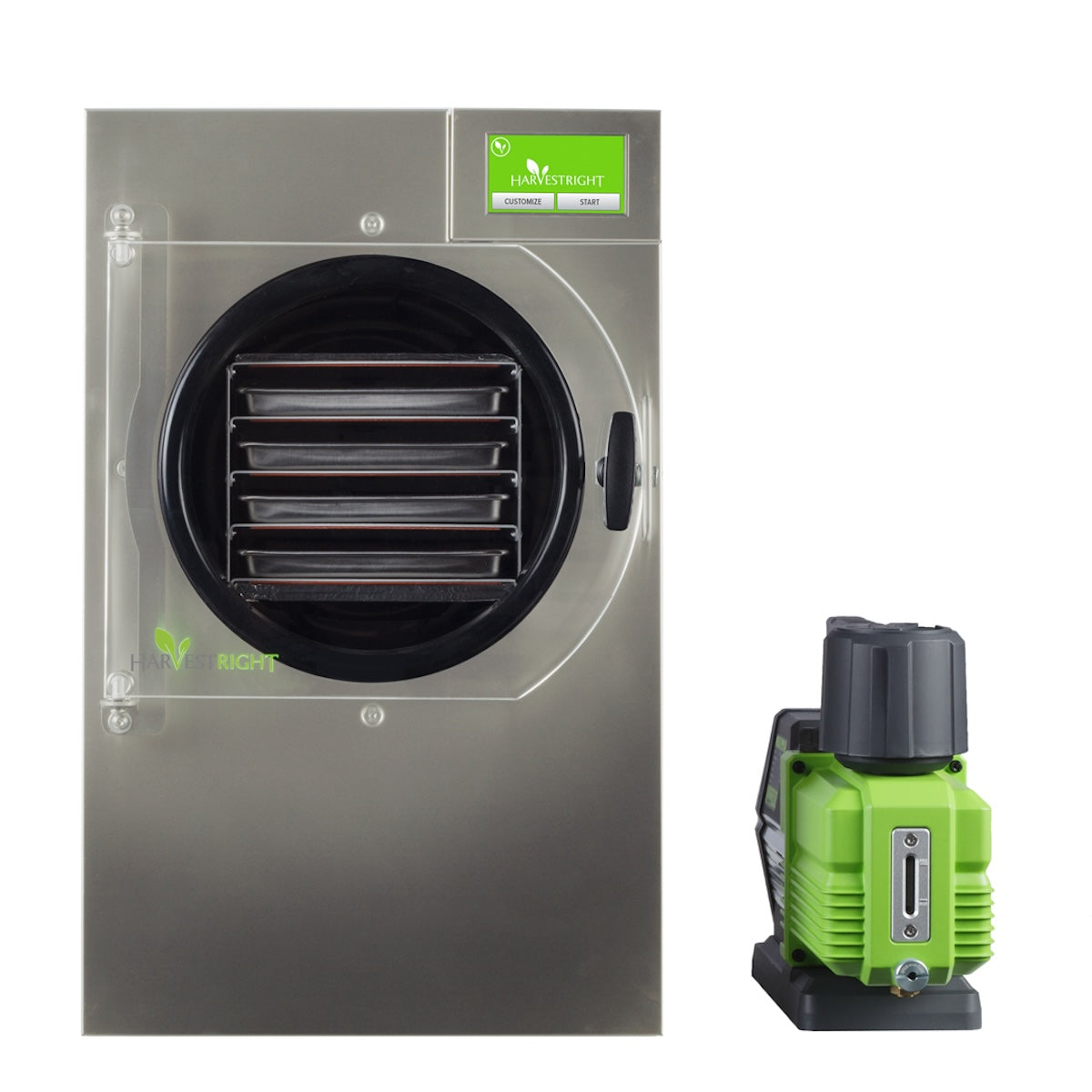
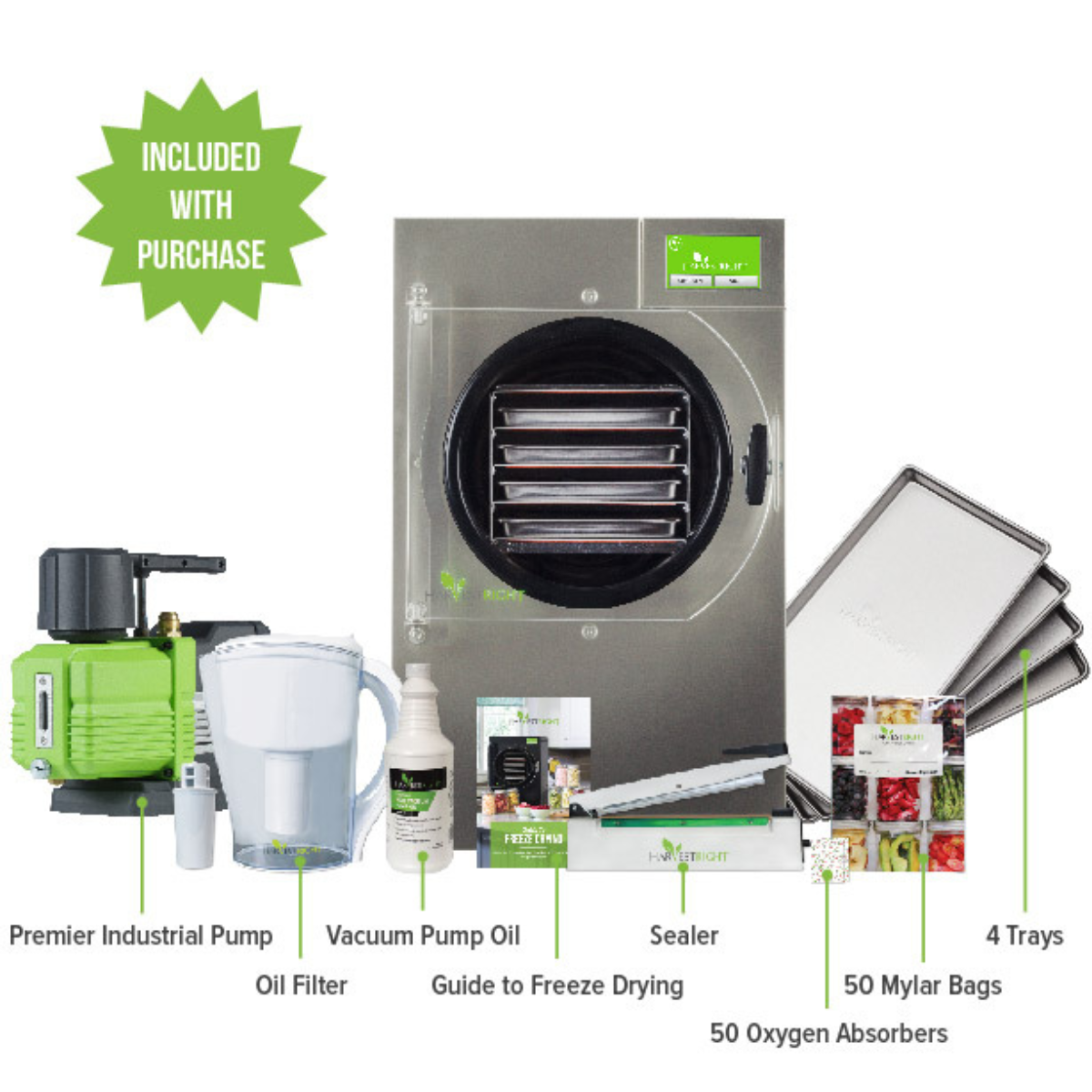
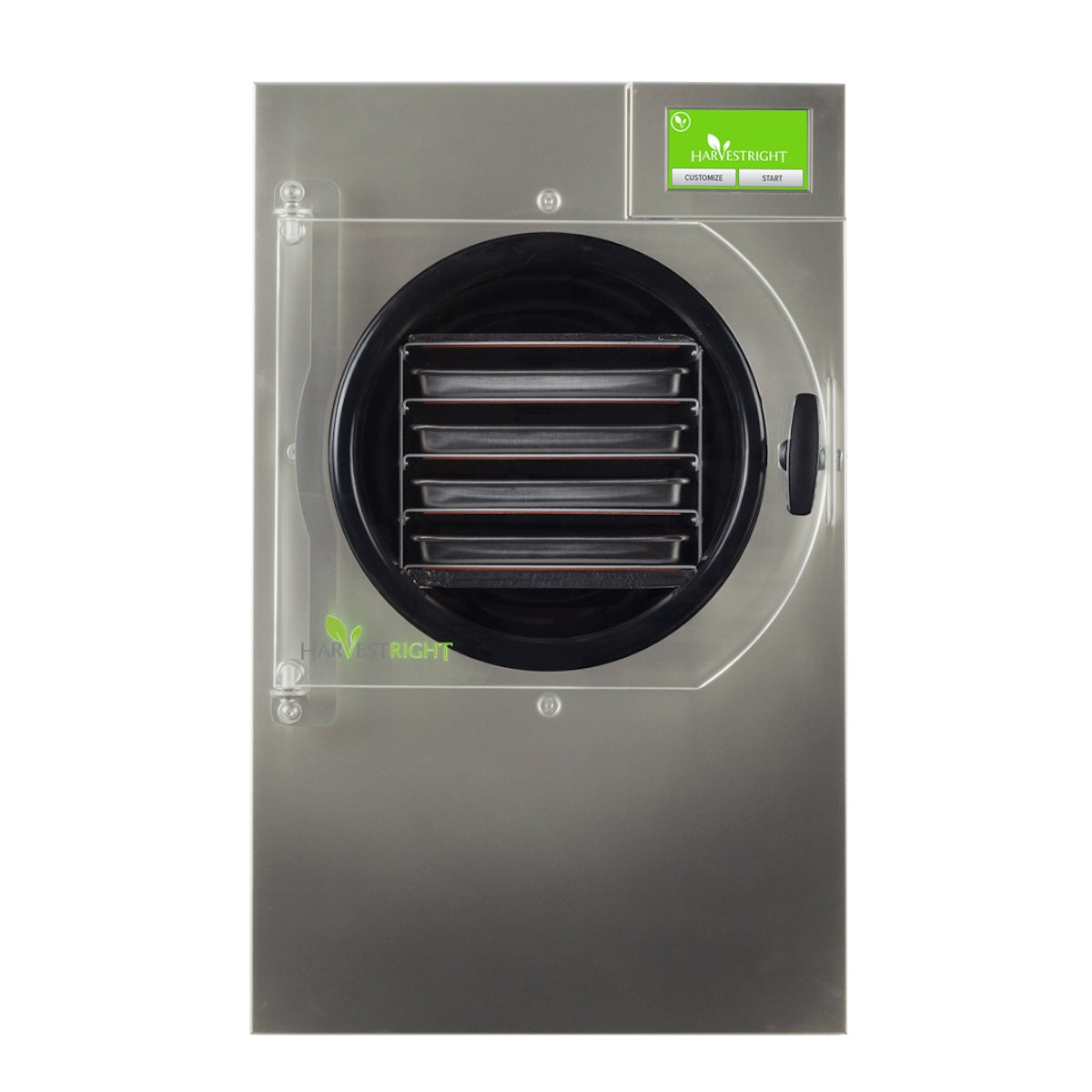
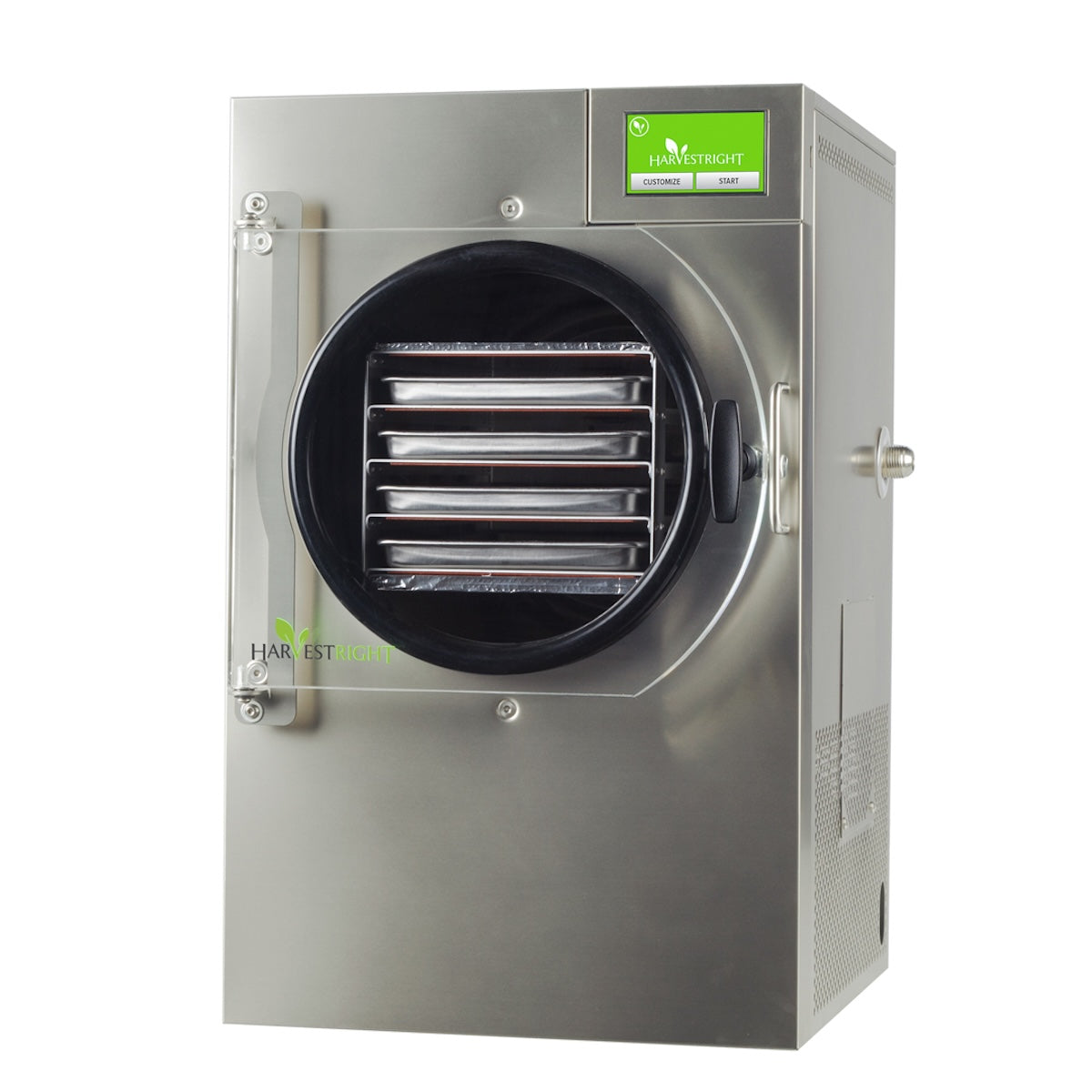
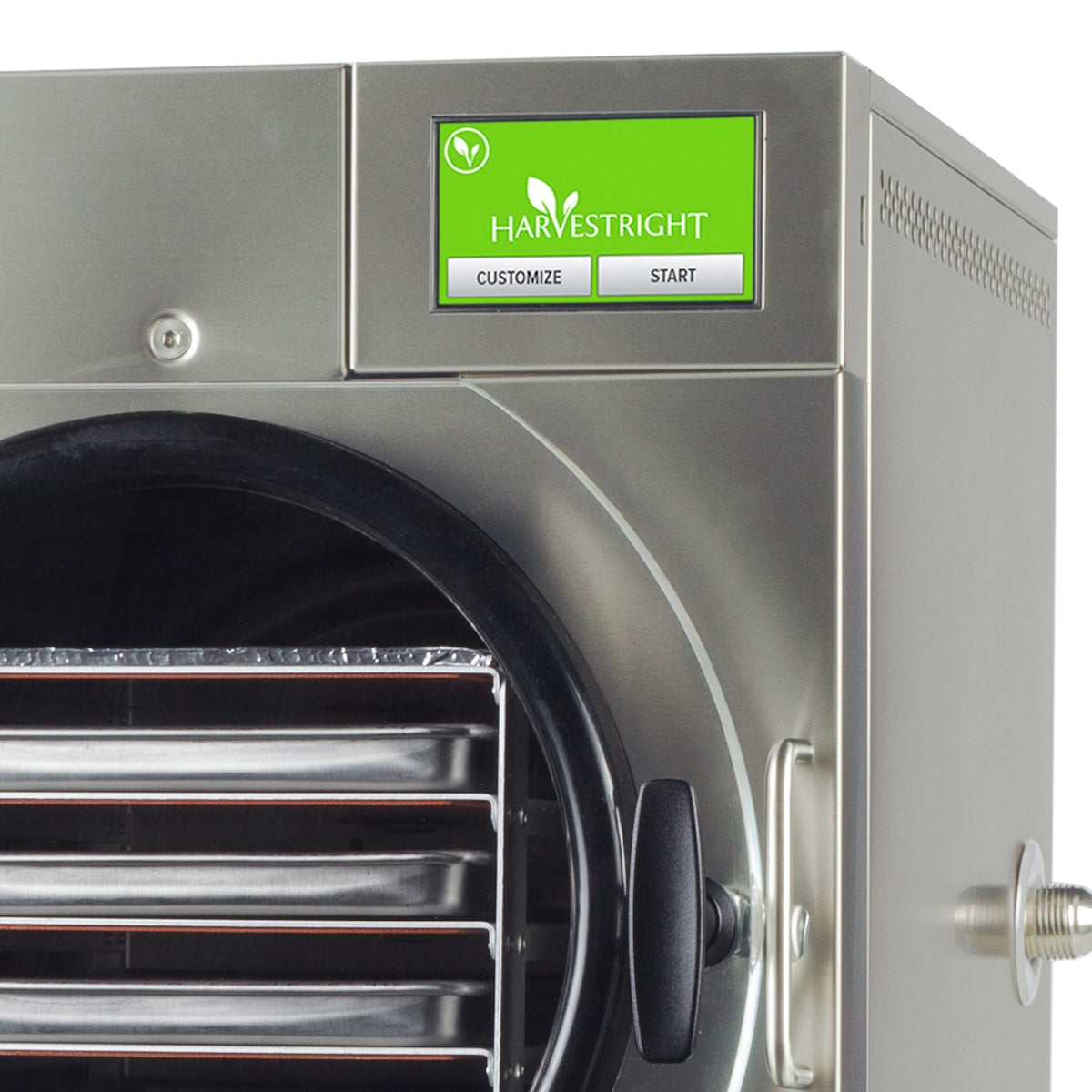
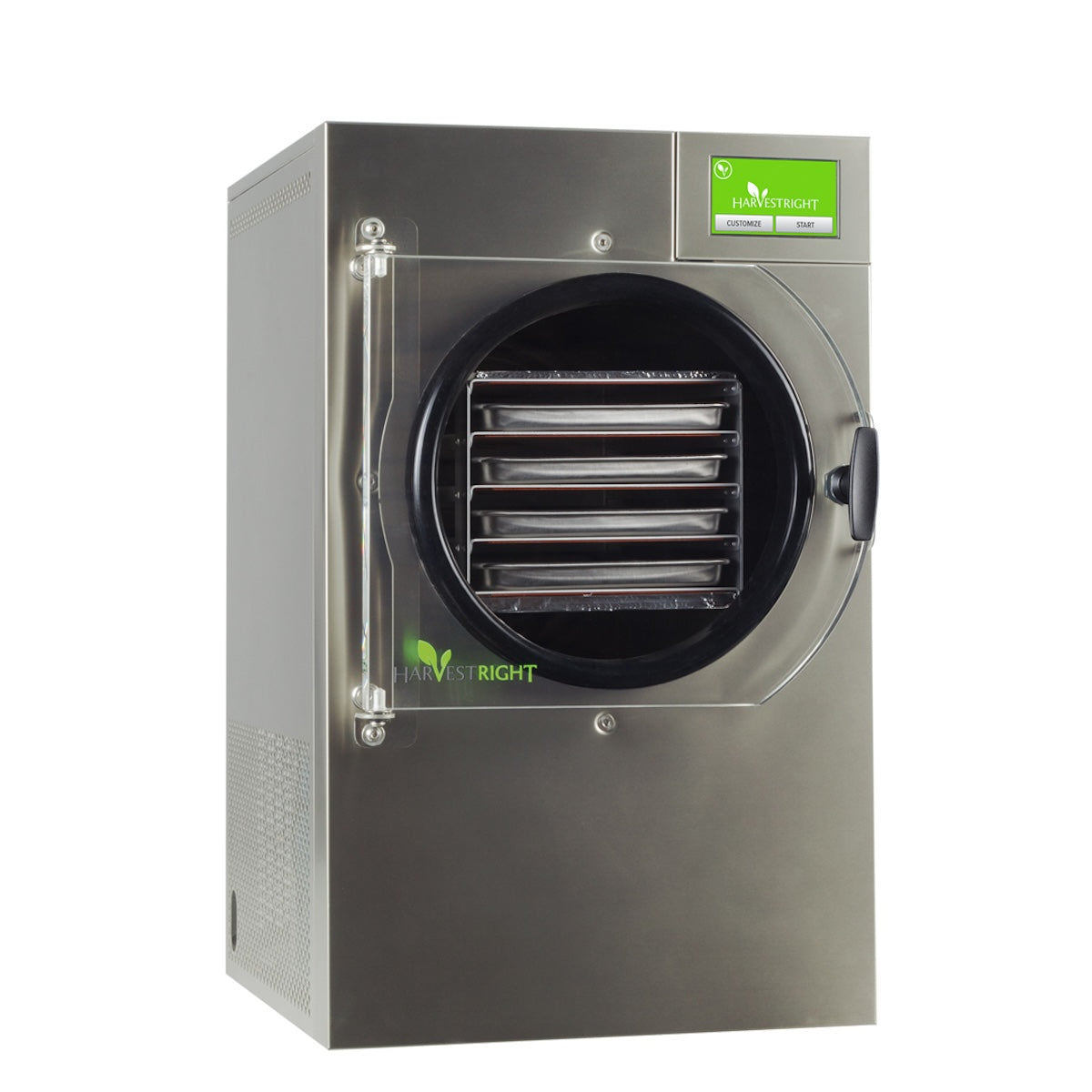
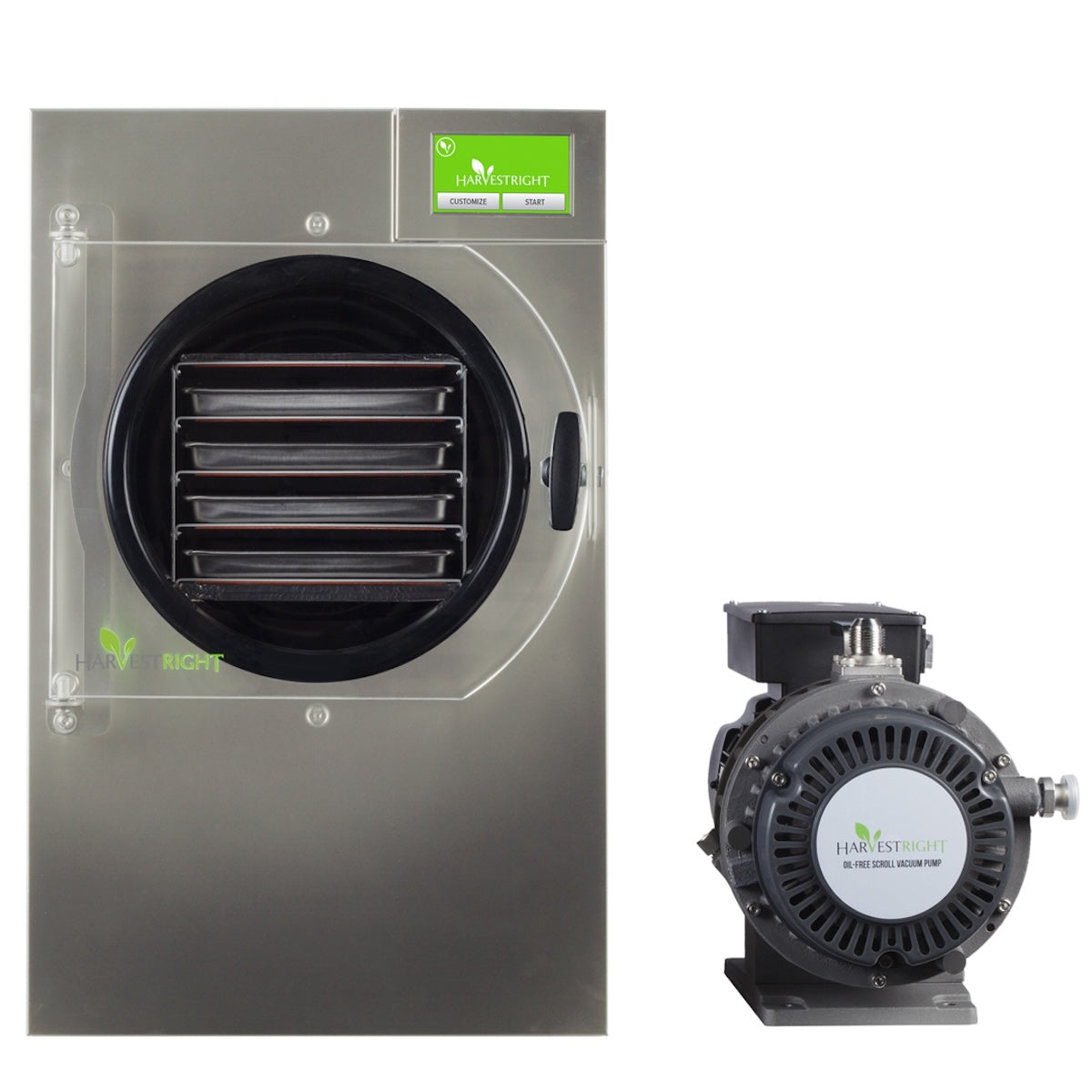
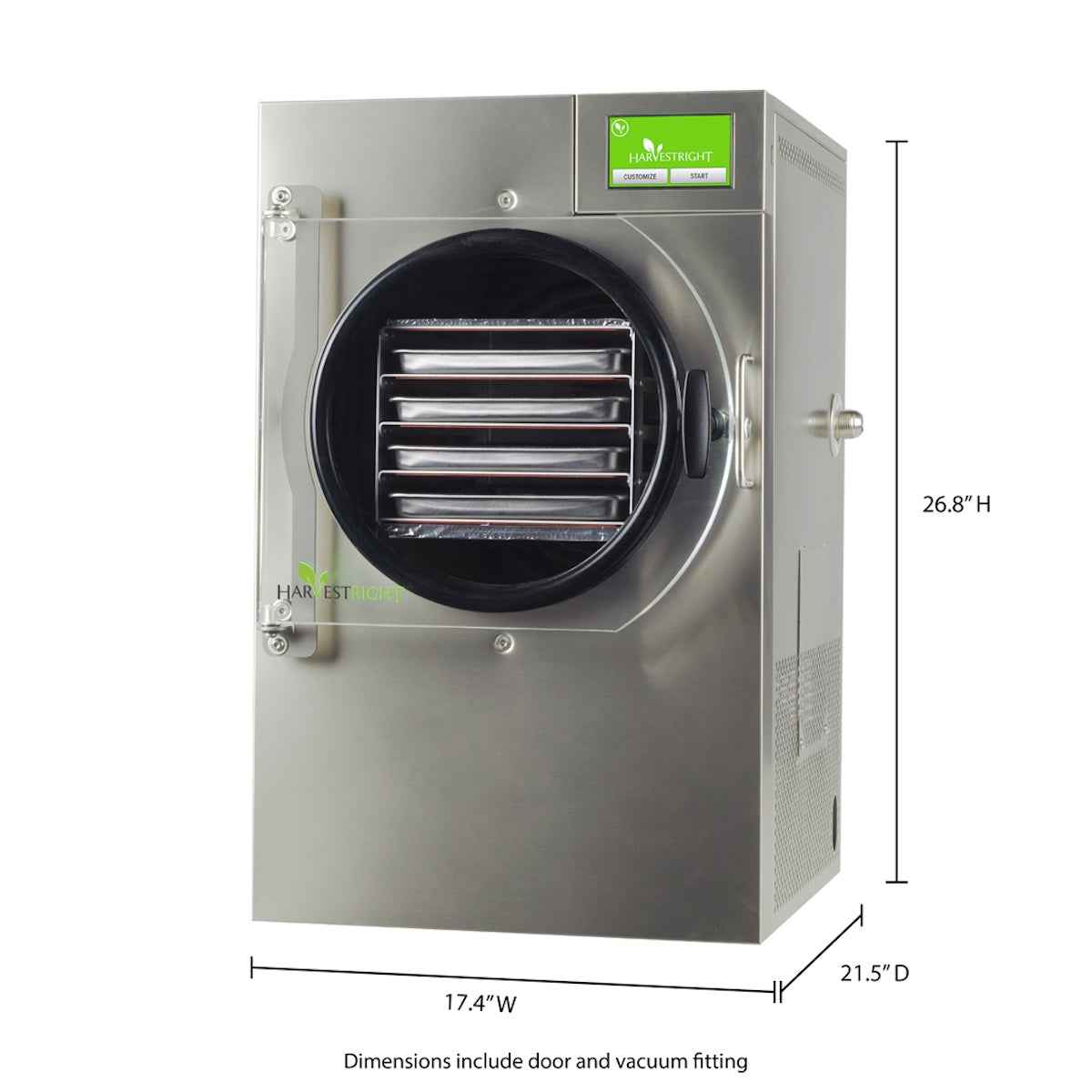
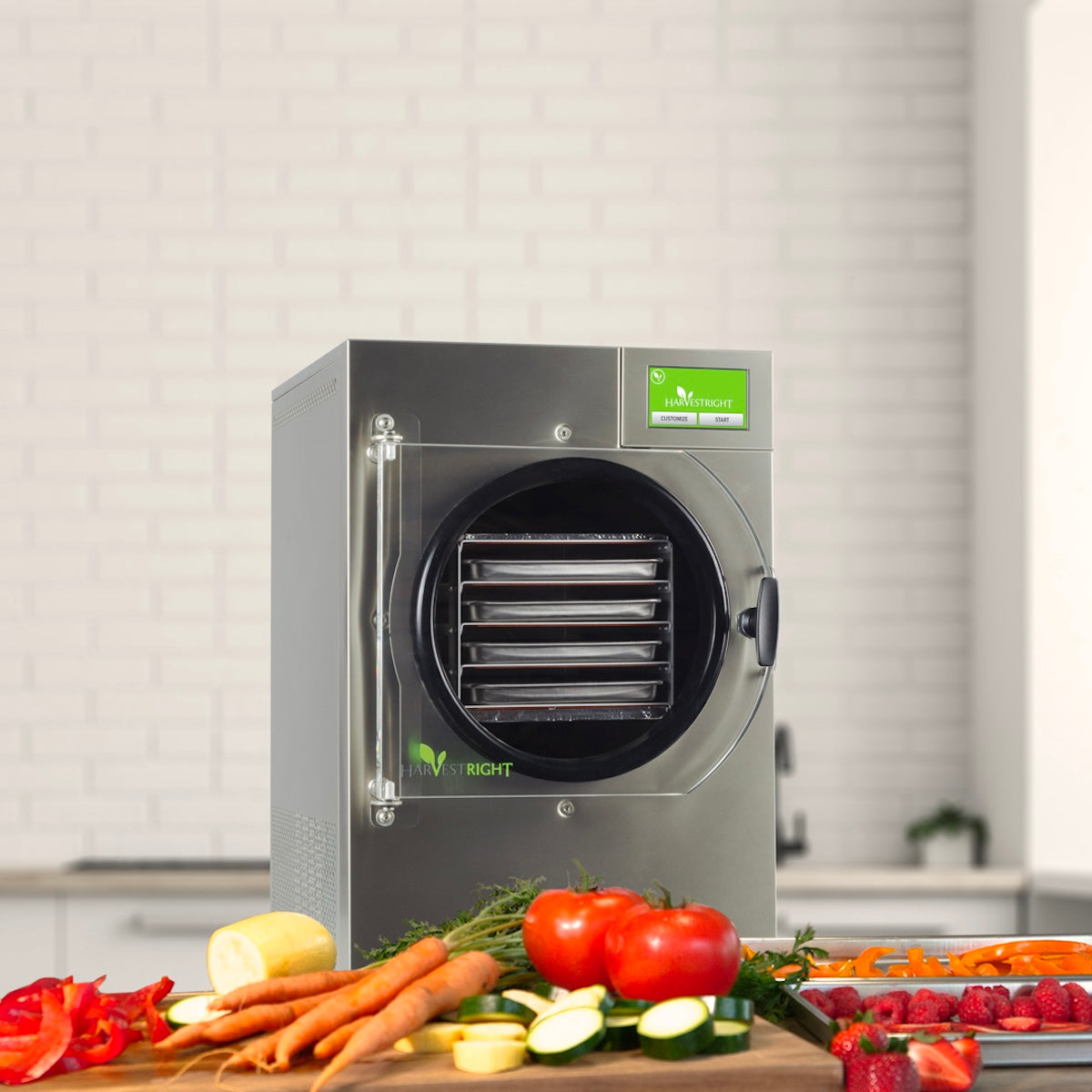
The Craze Advantage — Why Canadians Choose Us for Harvest Right
We’re an authorized Harvest Right dealer & repair centre in Canada. Every purchase includes our exclusive free extended warranty and is backed by our Best Price in Canada guarantee.
* Free extended warranty adds 1 extra year labour to the standard 3-year warranty (terms apply).
* Best Price in Canada Guarantee — we match authorized dealer pricing.
Harvest Right Freeze Dryers are designed to freeze-dry food, preserving it by removing moisture. Freeze-drying involves freezing the food, reducing the pressure, and then warming it slightly so that the frozen water sublimates directly from ice to vapour without passing through the liquid phase. This process preserves the food for extended periods (up to 25 years or more), maintaining its nutritional content, flavor, and texture.
Harvest Right Small Pro Features
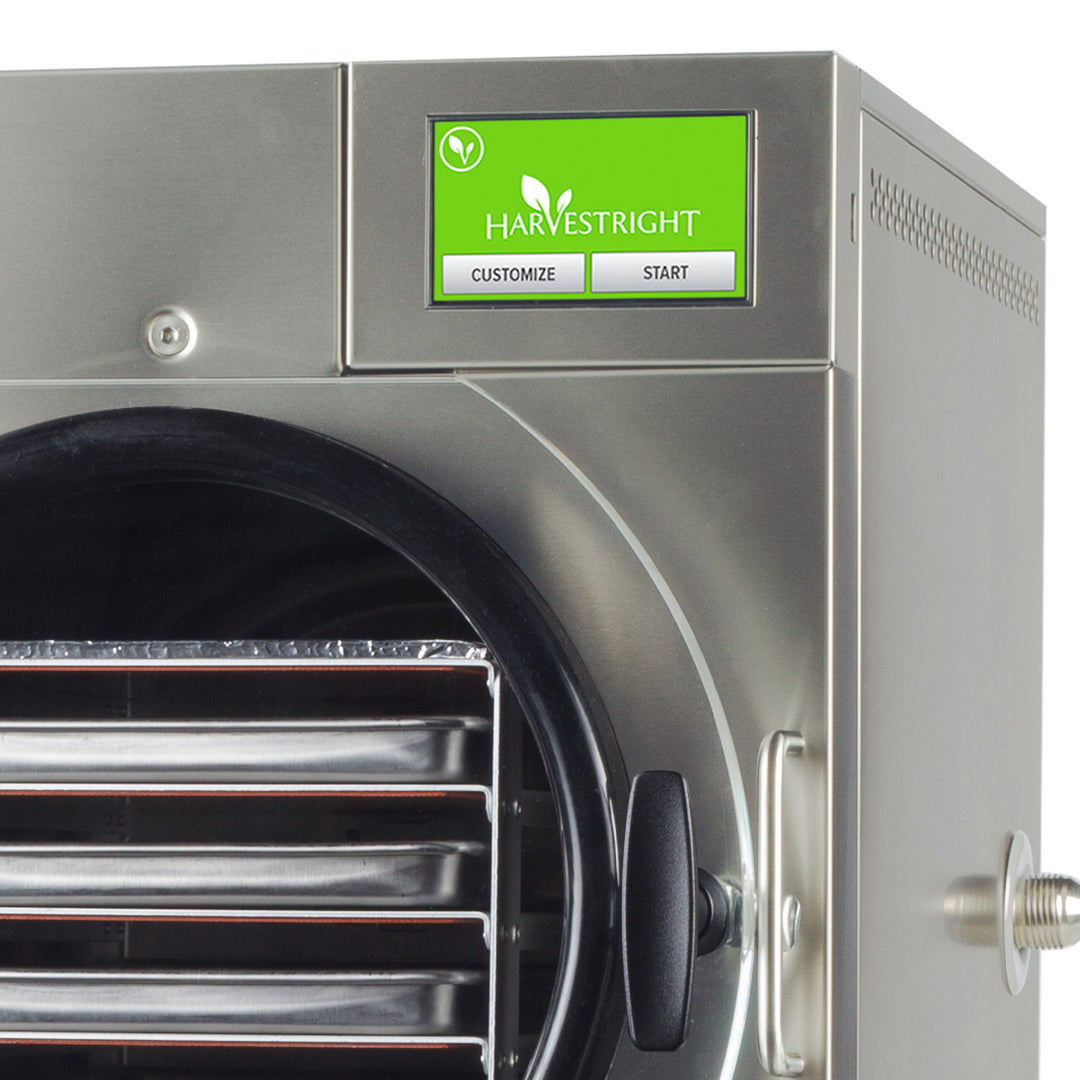
Easy to use
1. Load your meals, fruits or other items into the trays.
2. Place the trays into the freeze dryer and turn on.
3. After 20-40 hours, your food or other items are ready.
4. Store your freeze-dried goods in mason jars, #10 cans, or mylar bags.

Freeze dried food for the whole family.
• Freeze dry 6-10 lbs. of fresh food per batch.
• Freeze dry up to 1800 lbs per year.
• Food lasts up to 25 years when freeze dried.
• 434 sq. in of tray space.
Advantages of Freeze Dried Foods
-

Freeze Most Foods
Meals and Snacks
Freeze dried entire meals ready to eat in the future.
Fruits and Vegetables
Freeze dry fruits and veggies to add into meals or to eat as a snack.
Desserts and Treats
Freeze dry ice cream and many candies (such as skittles) for something fun to eat for the whole family. -

Better Food Preservation
Unmatched Shelf Life
Preserve foods for up to 25 years.Better Flavour and Quality
Freeze drying preserves up to 97% of the texture, flavour, and nutrition unlike canning.Nutrient Retention
Nearly all nutrients are preserved during the freeze dry process. -

Better Storage and Portability
Storage Options
Freeze Dried Foods can be stored in a variety of ways depending on your needs.Highly Portable
Freeze dried foods weigh far less making storage easier. Bagged freeze dried foods are also far more portable for road trips, hiking, camping or for emergencies should you have to evacuate.
What's Included
WATCH NOW: Jay freeze-dries a breakfast skillet with his Harvest Right Freeze Dryer:
Which freeze dryer do you need?
-

Small
Trays: 4
Food Per Batch: 6-10 lbs.
Food Per Year: Up to 1800 lbs.
Tray Space: 434 sq. inches
Dimensions (l/w/h): 26.8"x17.4"x 21.5"
Weight: 98 lbs
Power: 110V -

Medium
Trays: 5
Food Per Batch: 10-15 lbs.
Food Per Year: Up to 3000 lbs.
Tray Space: 675 sq. inches
Dimensions (l/w/h): 19'x25"x29"
Weight: 127 lbs
Power: 110V -

Large
Trays: 6
Food Per Batch: 18-27 lbs.
Food Per Year: Up to 5000 lbs.
Tray Space: 1107 sq. inches
Dimensions (w/d/h): 21.3"x27.5"x31.3"
Weight: 143 lbs
Power: 20 amp -

XL
Trays: 6
Food Per Batch: 40-50 lbs.
Food Per Year: Up to 10,000 lbs.
Tray Space: 2251 sq. inches
Dimensions (w/d/h): 24.3"x37.4"x35.6"
Weight: 258 lbs
Power: A dedicated 20 amp circuit (NEMA 5-20) outlet. -

Commercial
Trays: 9
Food Per Batch: 65-90 lbs.
Food Per Year: Up to 10,000 lbs.
Tray Space: 2251 sq. inches
Dimensions (w/d/h): 70"x33.5"x37.25
Weight: 985 lbs
Power: NEMA 10-30P, dedicated 30A circuit required.
FAQ's
How do freeze dryers work?
Freeze dryers work by preserving perishable materials by removing water through a process called freeze drying (or lyophilization). Freeze drying uses the following processes:
Freezing - Items are cooled to a very low temperature (below freezing). This causes the water inside the material to form ice crystals.
Primary Drying (Sublimation) - Pressure in the chamber is reduced (creating a vacuum), and the temperature is slightly raised causing the ice to sublimate. The water goes directly from solid (ice) to vapour (gas) without passing through the liquid phase. This removes around 95% of the water content.
Secondary Drying (Desorption) - The remaining water, bound more tightly to the material, is removed by slightly raising the temperature while maintaining the vacuum. This step eliminates the last 1–5% of moisture content, ensuring the material is thoroughly dried.
What can you freeze in a freeze dryer?
Fruits and Vegetables:
- Strawberries
- Apples
- Bananas
- Blueberries
- Mangoes
- Peaches
- Raspberries
- Peas
- Corn
- Green beans
Meats and Proteins:
- Jerky (freeze-dried meat)
- Freeze-dried cheese
Meals and Snacks:
- Yogurt bites
- Granola with freeze-dried fruits
- Certain freeze-dried soups or meals (if the ingredients are small or can be eaten dry)
Desserts and Treats:
- Freeze-dried ice cream (astronaut ice cream)
- Many candies (especially Skittles)
Are there items you should not put into a freeze dryer?
Yes. Some items are not suitable to freeze dry. Some of these items are high fat, high sugar or are carbonated and include:
- High-Fat Foods such as butter, lard, oils and mayonnaise.
- High-Sugar Foods such as honey, syrups, jams / jellies.
- Alcoholic and Carbonated Beverages
- Pure Chocolate
- Soft Cheeses and Cream Cream
- Certain Candies with gelatin
- Chewing Gum
- Fresh Bread
What are the advantages and disavdantages of freeze drying?
Advantages of Freeze-Drying:
Nutrient Preservation: Freeze-drying retains up to 97% of the nutrients, flavor, and texture of foods, making it a healthy option for long-term storage.
Long Shelf Life: Freeze-dried foods can last for years—often 25 years or more—without refrigeration, making them ideal for emergency preparedness and food storage.
Lightweight and Compact: The removal of moisture makes freeze-dried foods significantly lighter and more compact, which is perfect for camping, hiking, or backpacking.
Versatility: A wide range of foods can be freeze-dried, including fruits, vegetables, meats, and complete meals, allowing for diverse meal options.
Convenient Rehydration: Freeze-dried foods are easy to rehydrate, requiring only water, and they often retain their original texture and flavour after reconstitution.
Disadvantages of Freeze-Drying:
High Initial Cost: Freeze-drying equipment can be expensive, which may not be feasible for everyone.
Time-Consuming Process: The freeze-drying process can take several hours to over a day, depending on the type and quantity of food.
Energy Consumption: Freeze-dryers can consume a significant amount of energy during operation.
Texture Variation: While freeze-drying retains flavour and nutrients, some foods may lose their original texture, making them less appealing to some people.
Requires Pre-Preparation: Foods often need to be pre-prepared (washed, sliced, or cooked) before freeze-drying, which adds an extra step to the process.



















